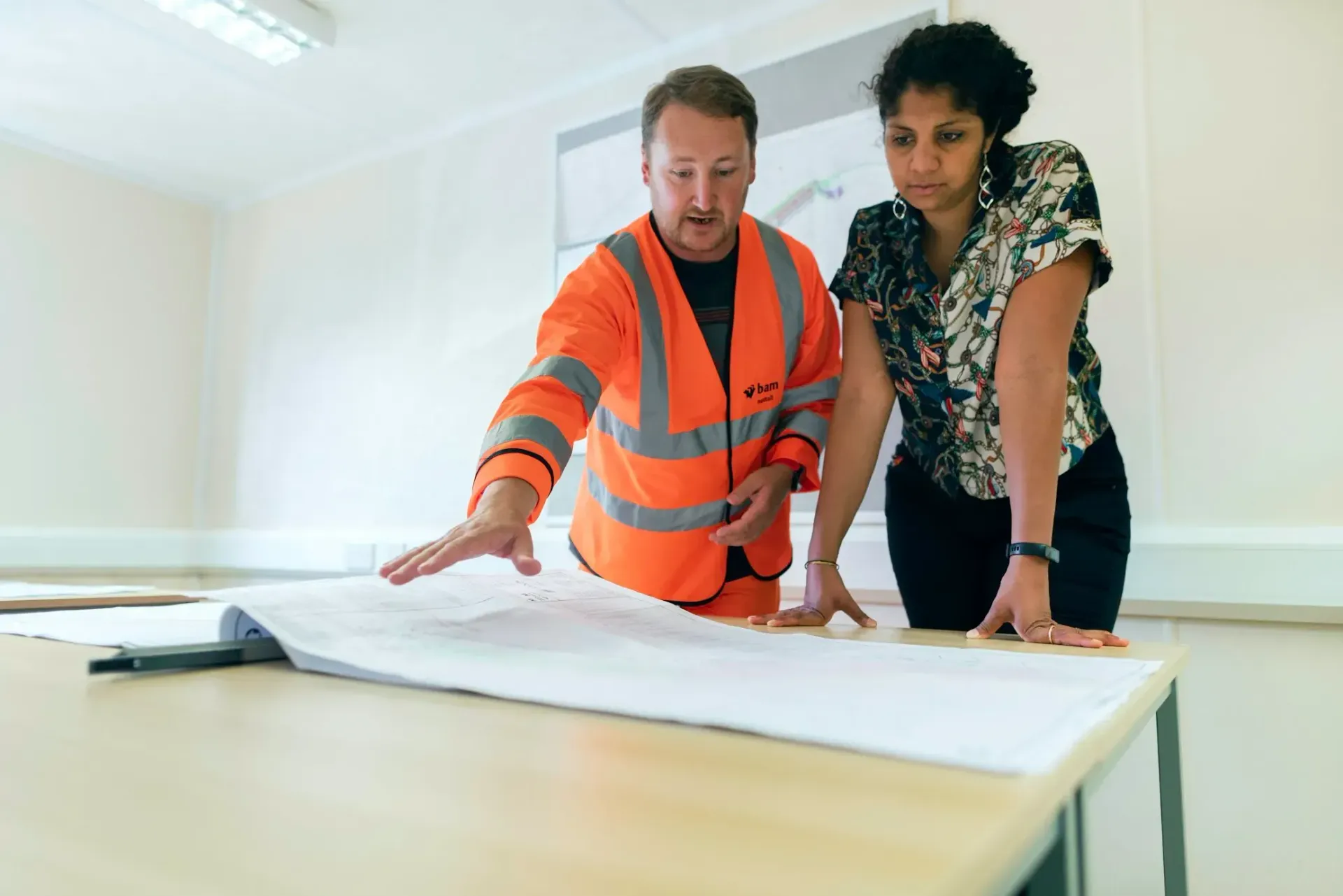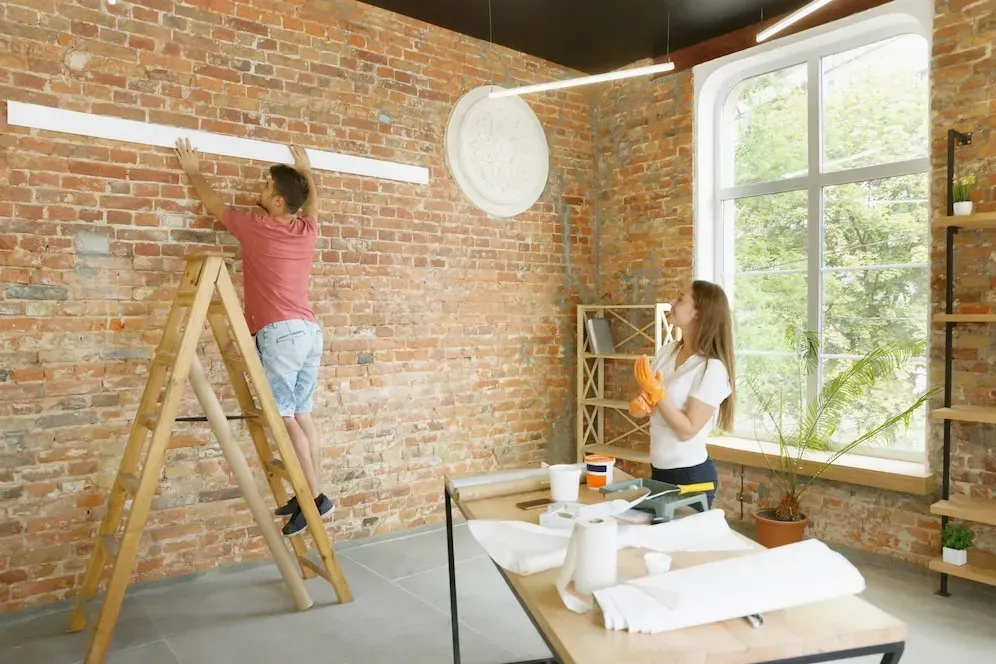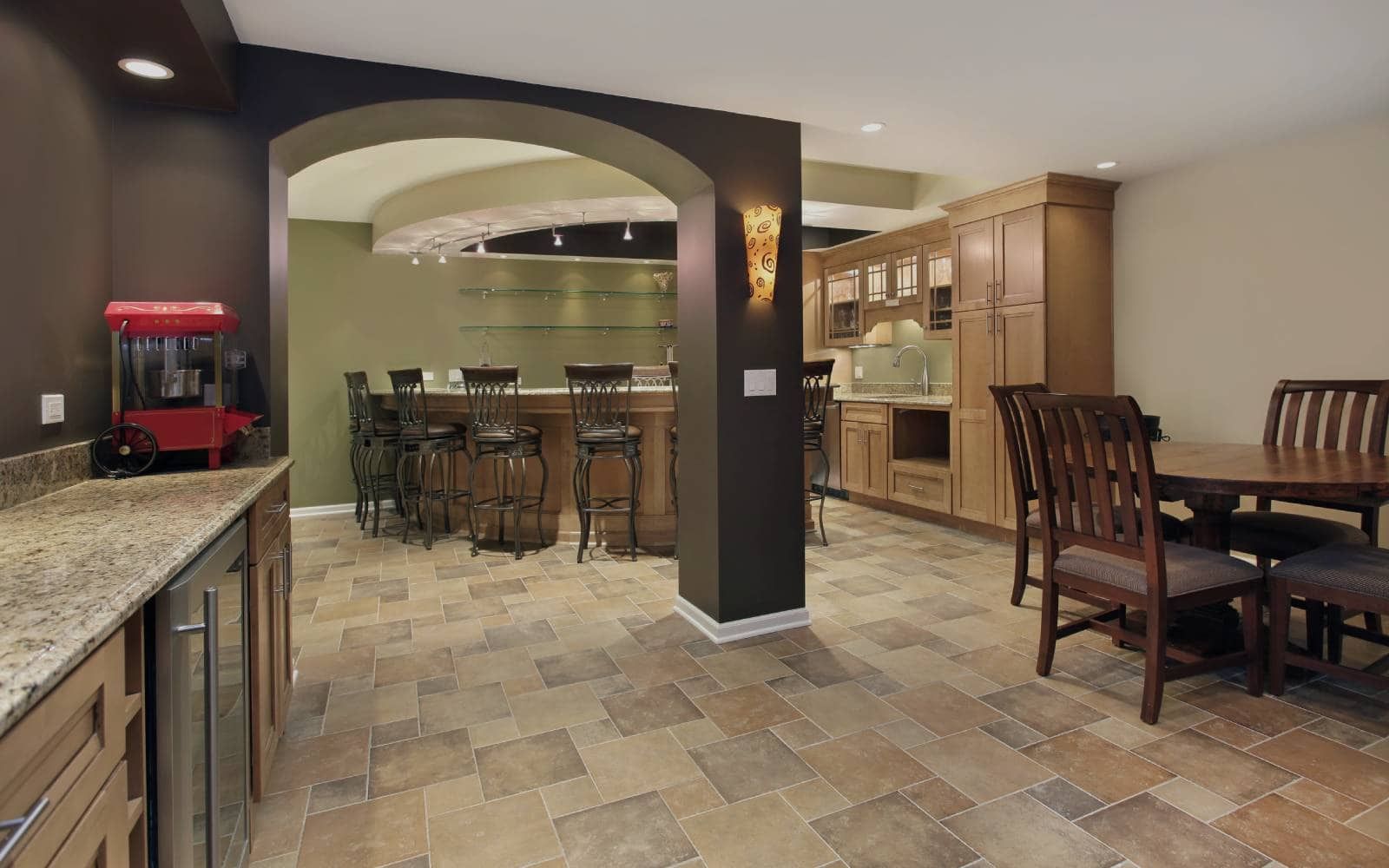How Long Does It Take to Finish a Basement?

How Long Does It Take to Finish a Basement? Your Ultimate Timeline for a Basement Remodel
Finishing a basement is one of the best ways to maximize your home's space, but how long does it actually take?
The timeline for a basement remodel varies based on several factors, including the size of your basement, the complexity of the design, and any challenges that may come up along the way. Most projects range from a few weeks to a couple of months, but the key to a smooth remodel is understanding the steps involved.
In this guide, we’ll break down everything you need to know about finishing your basement—from factors that can affect the timeline to the typical duration for each phase. Whether you hire a contractor or take the DIY route, you'll get a clearer idea of what to expect.
What Factors Affect the Timeline for Finishing a Basement?
Several factors directly impact how long it takes to finish a basement. Understanding these elements can help you get a clearer picture of your basement finishing timeline.
- Size of the Basement
A larger basement naturally takes more time to finish. More space means extra work for framing, electrical, and finishing touches. - Basement Condition
If your basement already has plumbing and electrical systems in place, you'll save time. However, if these need to be installed from scratch, expect the project to take longer. - Design Complexity
Simpler layouts finish faster. If you're going for an open-concept basement, it will be quicker compared to a basement that includes multiple rooms, a bathroom, or custom features like a wet bar or home theater. - Materials Availability
Waiting for materials can delay your project. Ordering everything ahead of time ensures the remodel moves smoothly without waiting on deliveries, especially if you’re working with custom pieces. - Permits and Inspections
In many areas, you need permits for structural, electrical, and plumbing work. Waiting for approvals and scheduling inspections can add time to your basement finishing timeline. - Contractor vs. DIY
A contractor might finish the job faster due to experience and resources. On the other hand, DIY projects can stretch the timeline, especially if you’re learning as you go.
Knowing what can impact the schedule helps you stay on top of the project and avoid surprises along the way.
How Long Does It Take to Finish a Typical Basement?
On average, it takes about 6 to 12 weeks to finish a typical basement. However, this timeline depends on several factors, including the complexity of the design and the scope of work.
A simpler layout with fewer rooms and standard finishes might take closer to the 6-week mark. If you’re adding more custom elements like a bathroom, wet bar, or additional rooms, you could be looking at the higher end of the range or beyond.
Hiring a professional contractor often speeds up the process, while DIY projects may take longer depending on your skill level and availability.
What Can Cause a Basement Remodel to Take Longer?
Several factors can stretch out the timeline of your basement remodeling project. Common reasons for delays include:
- Permit Delays
Depending on your location, securing permits for electrical, plumbing, or structural changes can take time. Additionally, scheduling inspections at different stages can add extra days or even weeks to the project. - Unforeseen Structural Issues
Discovering problems like water damage, foundation cracks, or mold during the remodel can require extra work before continuing with the planned renovation. - Material Backorders
If you're waiting on specific or custom materials, these delays can push back your timeline. This is especially common with items like custom cabinetry, flooring, or specialty finishes. - Change Orders
Making changes to the original plan, whether it's adjusting the design or upgrading materials, can increase the project length. Each change often requires additional labor and sometimes new permits.
These factors are common causes of extended project timelines, so planning ahead can help minimize delays.
Does the Size of the Basement Affect the Timeline?
Yes, the size of your basement directly impacts the remodeling timeline.
A larger basement requires more framing, insulation, drywall installation, and finishing touches, which adds to the overall time. For example, a 1,000-square-foot basement will take significantly more time to complete than a smaller, 500-square-foot space.
While the size of the basement is a major factor, the complexity of the design and the number of rooms also play a role. More space means more work, but a straightforward, open-concept design may finish faster than a smaller basement with multiple rooms.
What Are the Steps Involved in a Basement Finishing Project?
Understanding the steps involved in a basement finishing project can help you plan out the timeline and prepare for each phase of the remodel. Each step plays a key role in how long the project will take and the overall progress.
What is the First Step in Finishing a Basement?
The first step in finishing your basement is planning and design. This phase involves laying out the vision for your basement, determining its function, and finalizing the design.
You’ll need to decide whether you want a simple open layout or multiple rooms, and whether you want to include features like a bathroom, bar, or home office. Additionally, you’ll need to plan for electrical outlets, plumbing, and any other infrastructure your basement will need.
During this step, you’ll also need to obtain the necessary permits for structural, plumbing, and electrical work. Securing permits upfront is critical to avoid delays down the road.
When Do You Start Framing the Basement Walls?
Once you’ve secured permits and the design is finalized, the next major step is framing the basement walls. This is when your basement starts to take shape. The framing process defines the different rooms, hallways, and open spaces.
Framing typically begins with the exterior walls and works inward, creating the basic structure of the basement. This phase usually takes about a week, depending on the size and complexity of the layout. Once the framing is done, it's time to move on to rough-ins for plumbing, electrical, and HVAC.
How Long Does It Take to Install Drywall?
After the framing and rough-ins are complete, drywall installation begins. This process typically takes anywhere from 2 to 5 days, depending on the size of the basement.
The drywall phase involves hanging the sheets, taping the seams, applying joint compound, and sanding everything down for a smooth finish. Drywall is crucial because it prepares the walls for the final finishes like painting, wallpaper, or other treatments.
How Long Does Each Phase of a Basement Remodel Take?
Each phase of a basement remodel comes with its own timeline. Knowing how long each step takes will help you stay on track and adjust your expectations.
How Long Does It Take to Frame a Basement?
Framing a basement typically takes 3 to 7 days, depending on the size of the space and the complexity of the layout. Simple designs with fewer walls can be completed faster, while a more complex plan with multiple rooms and features will take longer. The framing phase sets the foundation for the rest of the work, so this part needs to be done carefully.
How Much Time Is Needed for Electrical and Plumbing Work?
Electrical and plumbing work can take 1 to 2 weeks to complete, depending on the amount of work needed. If your basement includes a bathroom, bar, or kitchenette, plumbing installation will add to the time. Electrical work, such as adding outlets, wiring for lighting, and installing any other fixtures, also varies depending on the design.
These trades often require inspections, which can delay the process if approvals are not scheduled promptly.
What Is the Average Timeline for Finishing Touches?
The finishing phase, including flooring, painting, trim work, and installing fixtures, typically takes 1 to 2 weeks. Installing carpets, tiles, or hardwood floors will vary depending on the material you choose, and custom finishes like built-in shelves or cabinets may add time.
Once these final touches are complete, your basement is nearly ready for use.
Should You Hire a Professional Contractor or DIY?
Deciding whether to hire a contractor or tackle the project yourself can greatly influence the timeline and overall success of your basement remodel. Both options come with their own set of advantages and potential risks.
What Are the Benefits of Hiring a Professional Contractor?
Hiring a professional contractor offers several benefits that can save you time, money, and stress. Contractors bring years of experience to the table, ensuring that each phase of your basement finishing project is done efficiently and up to code.
They also have established relationships with suppliers and subcontractors, which helps keep the project moving smoothly. Contractors handle permits, inspections, and scheduling, so you won’t have to worry about the legal or logistical details.
By hiring a contractor, you’ll likely complete the remodel faster, as they have the resources to work on multiple parts of the project simultaneously.
How Long Does It Take to Finish a Basement Professionally?
A professional contractor can typically finish a basement in about 6 to 8 weeks. This timeline includes planning, permits, framing, electrical, plumbing, drywall, and finishing touches.
Contractors can often shorten the overall timeline by working efficiently and handling multiple aspects of the project at once. However, larger and more complex basements may take closer to 10 to 12 weeks.
Are There Any Risks of DIY Basement Finishing?
DIY basement finishing can seem appealing due to potential cost savings, but it comes with risks. First, without professional experience, certain tasks like electrical work, plumbing, or framing may take much longer. Mistakes during any phase of the remodel could lead to costly fixes down the road, extending the timeline even further.
Additionally, DIYers often struggle with permits and inspections, which can cause delays if not handled properly. Not to mention, the overall quality of work might not match that of a professional, potentially affecting the value and safety of your home.
If you have the skills and time, DIY can save money, but it often results in a longer and more challenging project.
What Is the Typical Basement Finish Timeline?
To help you set realistic expectations, let’s break down the typical timeline for finishing a basement. While every project is unique, understanding the average duration can give you a clearer picture of what to anticipate.
What Is the Average Timeline for a Basement Remodel?
The average timeline for a basement remodel is around 6 to 12 weeks. This includes everything from initial planning and design to the final touches like painting and flooring.
Smaller, simpler projects may be completed in less time, while more complex designs, such as basements with multiple rooms or custom features, may take closer to 12 weeks or more.
How Many Weeks to Finish a Basement on Average?
For most homeowners, it takes about 8 to 10 weeks to finish a typical basement. This timeline includes all major phases like framing, drywall, electrical work, and finishing touches. A straightforward, open-concept design will fall on the shorter end, while more intricate layouts with bathrooms, bars, or extra rooms will push it to the higher end.
What Should Homeowners Expect in Terms of Project Duration?
Homeowners should expect some flexibility in the timeline due to potential delays like inspection scheduling, material backorders, or unexpected structural issues. Even if everything goes according to plan, it’s a good idea to prepare for an extra week or two in case of unforeseen challenges.
Communicating regularly with your contractor and staying ahead of potential issues can help you stay close to your desired timeline.
Conclusion
Finishing your basement is an exciting project that adds valuable living space to your home. While timelines can vary based on size, complexity, and whether you hire a professional or go the DIY route, knowing what to expect helps keep the project on track. By breaking down each phase and understanding potential delays, you can better manage the process and avoid frustration.
Whether you’re looking for a simple, open basement or a custom design with all the extras, planning your timeline wisely will ensure your basement remodel goes smoothly.
Ready to get started on your basement remodel or home renovation project? Foundation Finishes in Centerville, UT, specializes in basement finishing, home remodels, home additions, bathroom remodeling, and kitchen remodeling.
With years of experience, Foundation Finishes can handle every aspect of your remodel, ensuring a smooth process from start to finish. Contact them today to bring your dream home project to life!

Our Services
Tip & Articles
Business Hours
- Mon - Fri
- -
- Sat - Sun
- Closed

